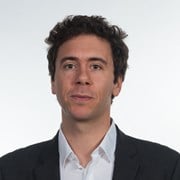The course will be held right before the yearly TEKNA DP&Forankring av offshore installasjoner conference in Trondheim, so that it will be convenient to attend both events.
State-of-the-art on the following topics will be presented, and there will be time for questions after each presentation:
Mooring analyses
Objective: Understand the ingredients of mooring analyses, and how they are performed in SIMA
- Goal of a mooring analysis, and quantities of interest
- Generic design basis
- Modelling of mooring lines
- Low-frequency and wave-frequency loads and motions
- Examples in SIMA
Waves, wave models, extreme waves
Objective: Understand the wave theories applied in mooring analyses, and their limitations.
- Basics and not-so-basics about waves
- Wave generation and propagation, at sea and in a laboratory
- Usefulness and limitation of linear waves
- Examples and simulation of nonlinear wave effects
Linear wave radiation/diffraction analyses
Objective: Recap the best practices when running wave radiation/diffraction analyses
- Quantities of interest to be evaluated for a mooring analysis:
- Basic theory of linear radiation/diffraction analysis. Retardation functions.
- Panel models, meshing, size distribution
- Important analysis parameters (irregular frequencies removal for ex.)
- Experience with WAMIT and Hydrostar
Low-frequency nonlinear wave loads
Objective: Understand hydrodynamic effects that affect the low-frequency hydrodynamic loads, and how to model them in a mooring analysis.
- Importance of low-frequency wave loads for mooring systems
- What is a quadratic transfer function, and how to compute it?
- Newman's approximation versus full QTFs
- Wave-current interaction effects, and higher-order loads
- Empirical correction of QTFs
Model testing
Objective: Understand how model tests are carried out from spec. to report, to maximize their benefits for the project.
- Why model tests: importance of sharing clearly defined objectives with the lab.
- How to set up a test matrix
- How model tests are executed
- Model manufacturing and instrumentation
- Main error sources
CFD for offshore applications
Objective: Understand the possibilities and limitations in CFD for offshore applications, today.
- What is CFD and when to use it
- CFD for moored structures
- Wind loads and current loads
- Reproducing waves in CFD
- Wave loads in CFD, including impact
Target number of participants will be 25.
The presentations will be given by senior scientists with expertise and hands-on experience in their domain.
Hard copies of the presentations will be provided for note-taking and reference.
Lunch is included.
Cost: 9000kr, excl taxes

